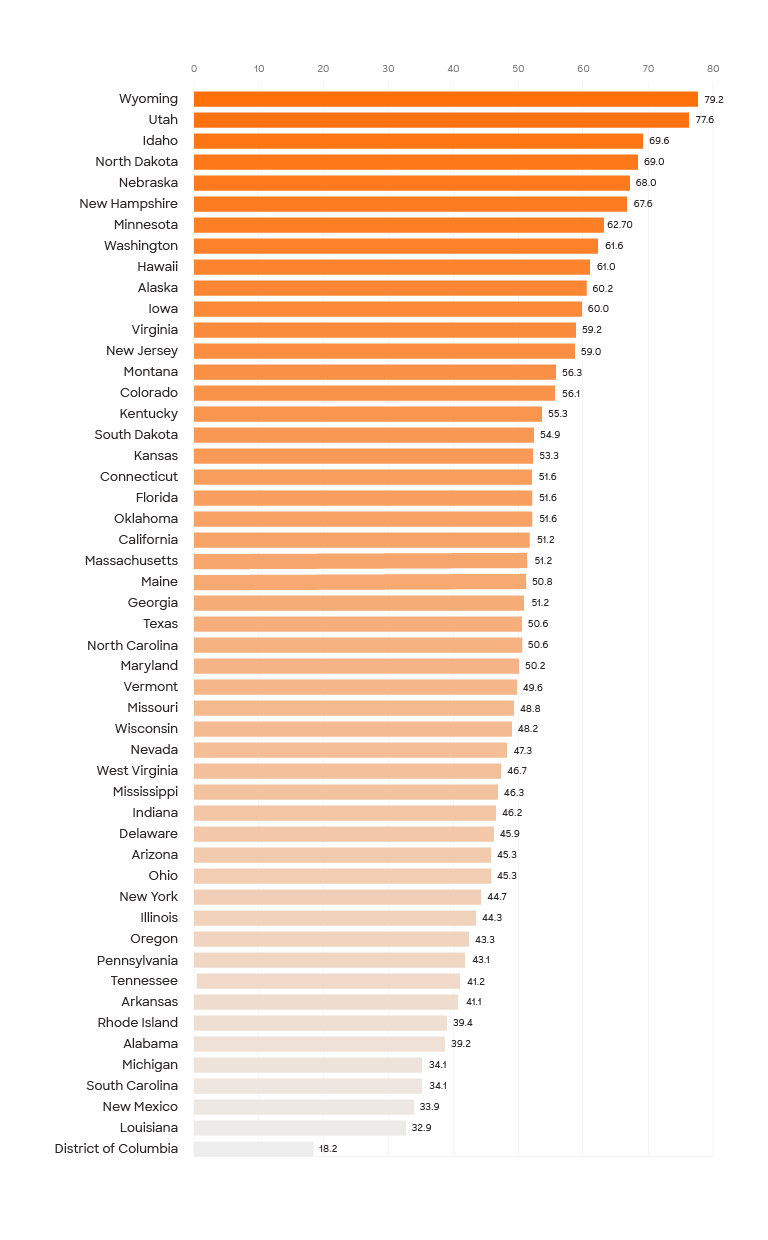You want the best for your child. When deciding on a place to live, you'll probably be looking at things like affordability, safety and education — especially if you have little ones in tow. If you're trying to figure out where to move (or where not to move) with your family, there are many things to consider.
We came up with the Policygenius Family Friendly Index to learn which states are the best and worst places to raise your children.
What makes a state a good place to raise children?
The index doesn’t just measure how much money people have. It captures the state’s safety, housing affordability and the financial security. It also factors in your child’s ability to get a good education and stay safe.
About the index
The Policygenius Family Friendly Index is made up of ten figures, combined and weighted equally.
Percentage of families: Percent of households who have one or more children
Percent of families living in poverty: Percent of families who live below the poverty line
Cost of child care: Average annual cost of raising a child
Cost of college: Average annual cost of a public, four-year college
Divorce rate: Number of couples undergoing a divorce in a given year
Infant mortality rate: Number of deaths under one year of age per 1,000 live births
Violent crime per capita: Number of violent crimes per 100,000 people
Median household income: The median combined income of every individual in a household.
Average test score: The average scale score of the fourth-grade National Assessment of Educational Progress
Housing costs as a percent of income: The percentage of households putting 30% or more of their income to housing. (Personal finance experts generally suggest spending less.)
We combined these numbers to make the Policygenius Family Friendly Index. Each state is ranked out of 100, and a higher score means a better place to raise a family.
To learn more, read our comprehensive guide to preparing for a new baby.

Exploring the index
Wyoming was ranked the best state to raise a child due to low college costs ($5,400), child care costs ($10,394) and violence crime per capita (238 per 100,000 people).
Washington, D.C. was ranked the worst state to raise a child because of its high child care ($23,666) and family poverty rate (39%), not to mention its high violence crime per capita (1,005 per 100,000 people).
Questions about the index? You can ask in the comments below.
Here’s a geographical look at the rankings:

Financially preparing for a baby
1. Plan ahead for maternity or paternity leave. Read over your benefits package to find out how much time you and your partner’s jobs allow for parental leave. If you need to take unpaid leave, factor that into your finances. If needed, begin planning for child care. It can take days or weeks to find the right daycare or babysitter. 2. Draft a budget. Record any recurring child care costs (think diapers and babysitter fees) in a spreadsheet to keep track of your money. Here’s a downloadable family budgeting spreadsheet to get you started. 3. Begin preparing for unexpected medical costs. Babies are expensive medically, even if you have insurance. Out-of-pocket medical costs for childbirth vary widely. Having an emergency fund comes in handy. 4. Start an emergency fund. If you haven’t already, start setting aside money for the unexpected. A rule of thumb is three to six months of expenses. One of the easiest ways to grow your savings is opening a high-yield savings account. Learn more.
Data sources: U.S. Census Bureau for housing costs, median household income, percent of families and percent of families living in poverty. Child Care Aware for child cast costs. Centers for Disease Control for infant mortatlity rate and divorce rate. Federal Bureau of Investigation for violent crime rates. College Board for college prices. Nation's Report Card for fourth-grade test scores.
